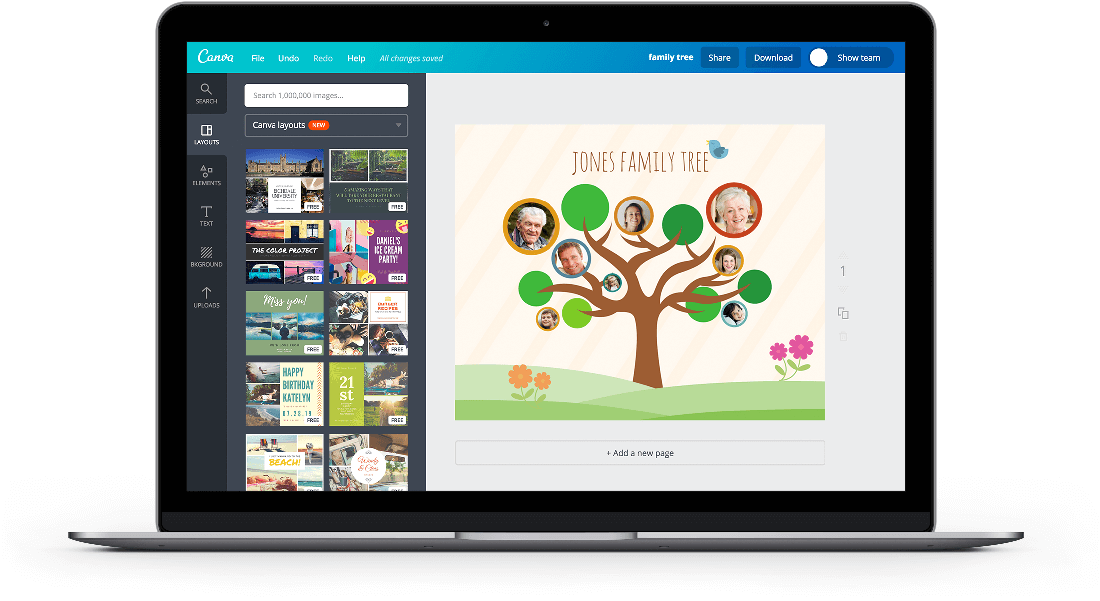
Remember when you were in elementary school and the teacher asked you to make a family tree? It probably consisted of your parents, grandparent, and siblings. Maybe, an uncle or aunt. Moreover, the format would have been one of those ubiquitous poster boards that we used for all of our presentations. In those days, some families were lucky enough to have family trees that spanned for generations, but those families were a minority, for sure. How times have changed! With the help of the internet, making a family tree is not as arduous and time consuming. In addition, there are tons of creative ways to depict your family tree via Word, Excel, PowerPoint, Canva; just to name a few. You can even get creative inspiration from Pinterest.
Records such as death certificates, census data, and marriage certificates have been archived for decades, but people had to drive to their local libraries or other government offices to access the documents. Now, you can visit the USA.gov website for faster assistance. The data seems endless…..once you find relatives to add to your family tree, you can find out interesting details and facts about their lives. I get the impression that many people are interested in their family tree so that they can gain a better understanding of their ancestry and ethnicity. But, there is so much more! Wouldn’t it be interesting to find out if you had an ancestor in one of the wars or were related to one of the first recorded woman explorers? There’s so much history and the records are available for our viewing.
It’s fun to find out if your ancestors were royalty or a past US president. In addition to exploring our individual pasts, these documents and databases help preserve our past for historical purposes. Without this knowledge, we wouldn’t know about past figures that have played important roles in our history, immigration patterns, and historical events such as war and political movements.
Researching and creating family trees has become particularly popular as of late. In fact, there was even a documentary-style comedy television show called “Family Tree” that lasted one season in 2013. The show had mixed reviews and although, it’s a satirical view of exploring the past, it accurately portrays how individuals could become interested in obtaining more awareness about where they come from.
Many people are interested in learning more about how to make a family tree, but do not know where to begin. If you are struggling to get started due to the overwhelming amount of info available, a good place to start is the National Archives website that provides guidance as well as a list of databases that are useful.
It’s important to understand the difference between family trees based on historical data vs. genetic data. Examples of some historical records that can link us to our past and assist with creating a family tree are as follows:
- Census Records
- Court Records
- Immigration Records
- Tax Records
- Land Records
- Microfilmed Records
- Military Records
- Native American Records
- Naturalization Records
This information has been available for decades. It’s only recently that our enhanced technology has provided a way to obtain genetic data and link it all together to improve and extend the branches of our family tree.
Ancestry.com was one of the first (if not the first) to start the digital genealogy trend. I remember getting excited and using the website to complete my family tree in the early 2000s. I spent hours sifting through the many documents and pictures of possible relatives. At the time, I had no idea that one day this same company would be involved in the direct to consumer (DTC) industry that is further elucidating our identities. The site has come a long way. Now, you can share your trees with people and import and export data. Additionally, AncestryDNA (a subsidiary of Ancestry.com) is teeming with Calico to examine the millions of data from family trees and genetics that is housed within the databases of Ancestry.com in the hopes of gaining knowledge on longevity. It’s attention-grabbing question, “are their certain traits that enable some people to live longer than others?”
It’s amazing to see how all this data can be used. Often this data is used without the knowledge of the customer that provided it in the first place which is another topic of discussion entirely. This is definitely a future that we never imagined back in elementary school when we were learning about family trees for the first time. I don’t know about you, but I am excited to see where we go from here.
https://www.canva.com/create/family-trees/
https://www.pinterest.com/explore/make-a-family-tree/
https://www.archives.gov/research/genealogy/other-websites/database-links.html
https://www.hbo.com/family-tree

Nikki Collins is a freelance writer and scientist. Her scientific experience ranges from academic research at IU School of Medicine to the public health arena working in institutions such as Centers for Disease Control and Prevention (CDC). When not in a lab or at a computer, she enjoys almost anything outdoors, dance, and reading.
